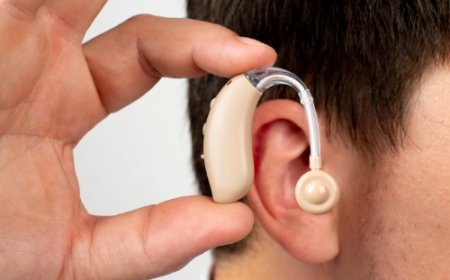How to Identify Pure Honey Before Paying a High Price


In a world full of processed and artificial food products, honey stands out as a natural and wholesome choice. However, with the increasing demand for pure and organic honey, many sellers are charging a premium. As a consumer, it’s important to know how to identify pure honey before committing to a high price. Paying more only makes sense when the product is genuine, and this guide will help you spot the difference.
The Issue of Adulteration
Honey is often adulterated with sugar syrup, glucose, or other cheap ingredients to increase volume and reduce cost. This not only dilutes its nutritional value but also misleads the customer. The demand for honey is rising, and so are the cases of impure and synthetic alternatives flooding the market. This is why identifying real honey is critical—especially if you're paying a premium pure honey price. The price alone should never be your only indicator of quality.
How to Test Honey for Purity
Several traditional and at-home methods can help you evaluate the purity of honey. One popular test is the water test. Place a spoonful of honey in a glass of water. If it settles at the bottom without dissolving quickly, it’s likely pure. Another method is the thumb test. Pure honey, when placed on your thumb, remains firm and doesn’t spread easily, indicating its thickness and lack of added moisture.
You can also heat a small quantity of honey. If it caramelizes quickly without producing foam or bubbles, it is generally unadulterated. Lastly, observe whether the honey crystallizes over time. Pure honey tends to solidify naturally, while fake honey often stays in liquid form for longer periods due to added chemicals.
What Justifies the Pure Honey Price?
Genuine honey production is labor-intensive and seasonal. Beekeepers invest time, effort, and resources to maintain healthy hives and ensure ethical harvesting. Natural nectar collection, filtration, and packaging processes are all cost factors. As a result, the pure honey price is generally higher than synthetic or adulterated varieties.
In India, the average cost of high-quality raw honey ranges between ₹500 to ₹800 per kilogram. Organic forest honey or single-origin honey may cost even more. On the other hand, if you find honey being sold at ₹150 to ₹200 per kg, it's important to question its authenticity. Cheaper options are often mass-produced or diluted with syrups, lacking both purity and nutrients.
Making a Smart Purchase
To ensure you’re getting what you pay for, it’s best to buy honey from trusted sources. Reputed brands, certified organic producers, and local farmers often provide better transparency about their production methods. Some sellers also offer lab reports to prove that their honey is free from added sugar or chemicals.
When browsing online, pay attention to product reviews, ingredient labels, and certifications. Choose products that mention “100% pure honey” and check if they comply with food safety standards like FSSAI or USDA Organic. Also, understand the type of honey you are purchasing—whether it is wild forest, multifloral, or monofloral—as this can affect both the price and flavor.
Beyond the Price Tag
It’s important not to get influenced solely by marketing or attractive packaging. A higher price for pure honey doesn't always guarantee higher quality. Sometimes, brands invest more in branding than in the product itself. Look beyond the label—study the source, check the consistency, and test a small batch if possible.
Educating yourself about the natural qualities of honey will help you become a more informed buyer. Honey that smells floral, tastes rich, and has a thick texture is usually a good sign. Over time, you’ll develop the experience to tell real from fake just by touch and taste.
Final Thoughts
Buying pure honey is a healthy choice, but only if the honey you’re purchasing is truly pure. With the rising pure honey price in the market, you owe it to yourself to ensure artificial or diluted products are not misleading you. By understanding the production process, learning how to test for purity, and buying from reputable sources, you can enjoy all the health benefits of honey—without being overcharged.
Investing in real honey is investing in your health. So the next time you see a jar of honey on the shelf with a premium price tag, take a moment to question its authenticity. Your body—and your wallet—will thank you.
What's Your Reaction?



















































